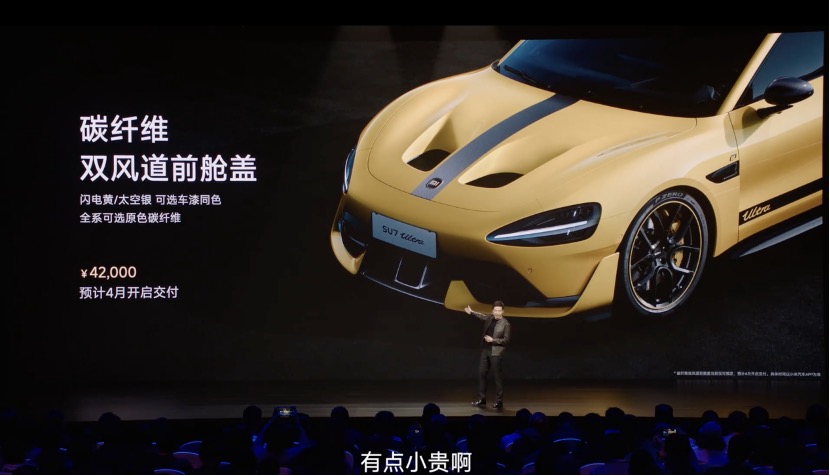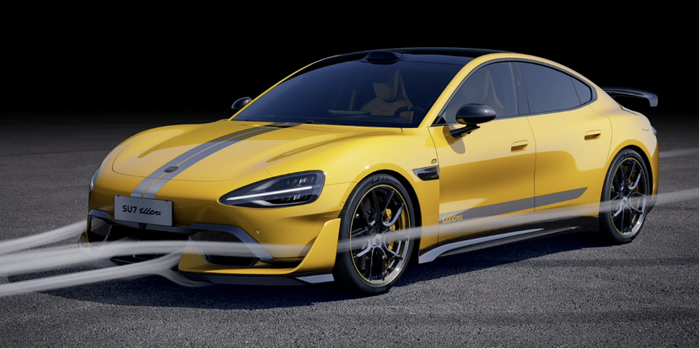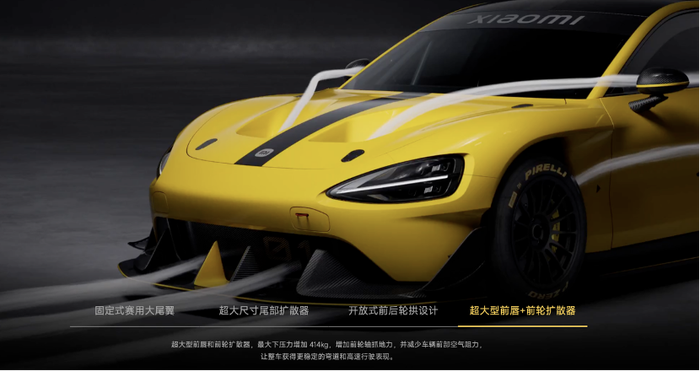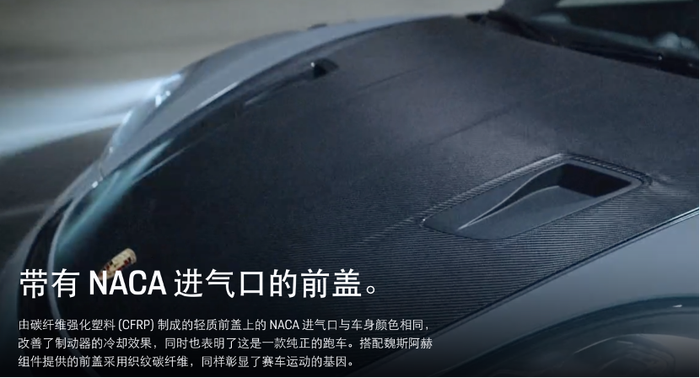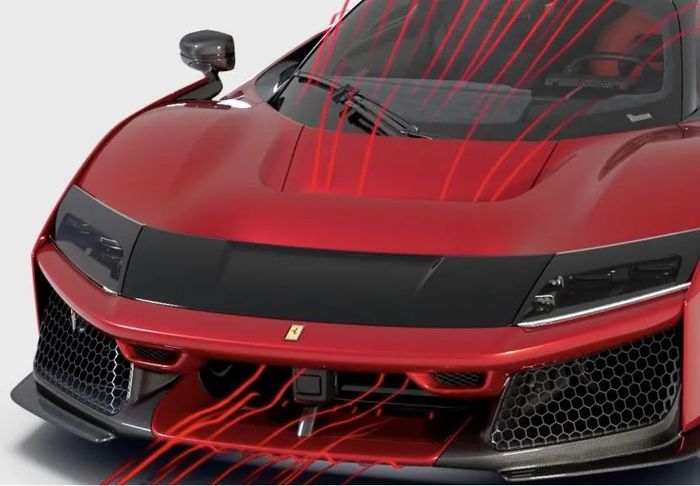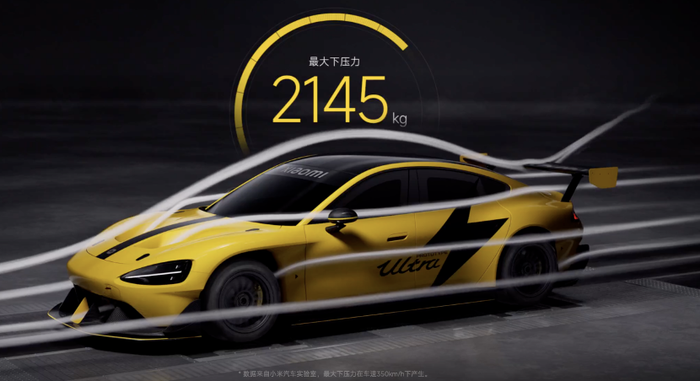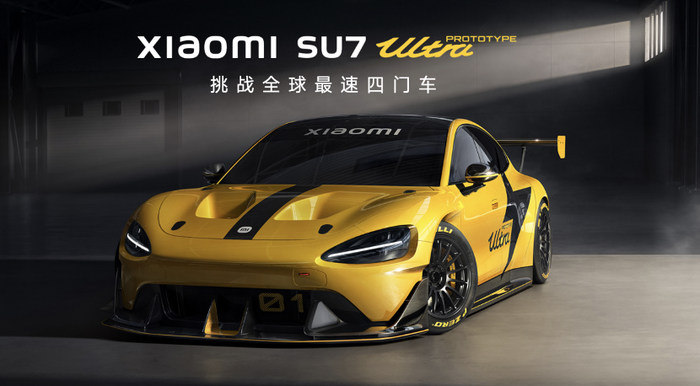On May 10, Lei Jun finished his workout and posted on Weibo. He reflected on the past month: “The last month has been the toughest since I founded Xiaomi. I felt low and canceled some meetings and business trips. I also paused my interactions on social media. Your concern and support gave me great confidence. I gradually found my courage and confidence to move forward. My condition is starting to improve.” The “month” Lei Jun mentioned refers to the highway accident involving Xiaomi Auto at the end of March. However, his and Xiaomi’s tough times are far from over. Xiaomi began delivering the SU7 Ultra dual air duct front hood version in early May. However, the company faced backlash for pushing an OTA update that promised 1500 horsepower. The carbon fiber front hood did not match the advertised features, sparking a major controversy. This incident prompted consumers to question how car companies define features through software. It raised concerns about corporate responsibility for overpromising and how consumer rights can be protected. Lei Jun called the Shanghai International Circuit Porsche’s home. The Xiaomi SU7 Ultra set the fastest lap, beating Porsche. Lei Jun’s marketing skills stand out. However, Xiaomi still needs to learn from Porsche. Xiaomi attributed its response to two issues as “insufficient clarity in communication.” This does not solve the problem. A Weibo post by Lei Jun from March 2 was deleted. It stated, “The carbon fiber front hood changed not only the appearance but also the internal structure. The dual air ducts lead directly to the hub, supporting hub cooling.”
This is one of the sources of future controversy. This statement is an update from the Xiaomi SU7 Ultra launch event on February 28, where he described the carbon fiber dual air duct front hood. He pinned the replay video of the event at the top of his Weibo feed. The video lasts 2 hours and 18 minutes, but the segment on the carbon fiber dual air duct front hood is brief, under two minutes. At the event, Lei Jun stated that Xiaomi had no plans to offer the carbon fiber dual air duct front hood on the production model. The prototype performed well at the Nürburgring, attracting significant attention. By the end of last year, user demand peaked. Internally, Xiaomi debated fiercely about offering the carbon fiber dual air duct front hood. He hesitated but ultimately decided to proceed with development. As a result, the delivery timeline for the production car with the carbon fiber dual air duct front hood will be delayed. “The carbon fiber dual air duct front hood costs 42,000 yuan (5830$). It’s a bit expensive, so I don’t recommend buying it,” Lei Jun said at the event. When he asked the audience, “Will you buy it?” he received a loud “yes” in response. With a price 280,000 yuan (38850$) lower than expected and its unique design, the SU7 Ultra sparked a buying frenzy. It achieved its annual sales target of 10,000 units just two hours after the event. Some buyers even chose to pay extra for the carbon fiber dual air duct front hood and accepted a longer delivery wait. By late April and early May, deliveries of the Xiaomi SU7 Ultra with the dual air duct front hood began. Driven by video views and curiosity, a video blogger and owner immediately disassembled the car and tested it with a blow dryer. They discovered that the dual air duct front hood design was merely decorative. Its actual function did not match the previously advertised “aerodynamic design” or “heat dissipation.”
Renowned car reviewer Chen Zhen shared two related videos. One video features an owner comparing the front structure of the perforated version and the standard SU7 Ultra. He reached two conclusions: First, the front structure and airflow are nearly the same for both versions. The perforated version has an additional cover weighing about 9.5 kg. Second, the standard SU7 Ultra can be modified into the perforated version. Chen Zhen agreed with both conclusions. However, Xiaomi Motors filed a complaint against the related test videos. They claimed the videos misled consumers and damaged the product’s image. Owners who paid extra for the carbon fiber dual-airflow hood formed groups to demand order cancellations. On May 7, Xiaomi Motors refunded deposits. Xiaomi Motors explained the carbon fiber dual-airflow hood issue on their official Weibo. They attributed the confusion to unclear communication. The hood meets the need for a replica exterior while also aiding airflow and front compartment cooling. In the Q&A session, Xiaomi Motors offered solutions to all owners who opted for the carbon fiber dual-airflow hood. For undelivered orders, they provided a limited-time option to switch back to the aluminum hood. Owners who received their cars and chose the carbon fiber hood before the deadline would earn 20,000 points. Yet, Xiaomi Motors’ ambiguous and inconsistent statements failed to gain acceptance from all users. The proposed solutions were not accepted. The group of owners demanding refunds has grown to about 400 people. Many people on social media post videos showing order details and requesting refunds for their cars. Most wear masks, sunglasses, and hats, or use virtual avatars. Not all car owners want refunds. Lin Min, the owner of the first Xiaomi SU7 Ultra, supports Lei Jun and Xiaomi. Car reviewers, including Chen Zhen, note that the carbon fiber dual-duct front hood mainly offers aesthetic value, not practical function. Most driving scenarios lack the speed needed to utilize the hood’s features. Despite this, Xiaomi’s aggressive marketing and lack of professionalism for the SU7 Ultra remain evident. Xiaomi previously faced similar issues with the SU7. They did not clarify the limitations of AEB until an accident occurred, showing they did not learn from past mistakes. Not all design choices prioritize looks. For high-performance sports cars, aerodynamic optimization is crucial. Strong horsepower often means high speeds, which require stability and effective heat dissipation. Thus, aerodynamic improvements focus on increasing downforce to ensure stability at high speeds and during turns. For example, the Porsche 718 Cayman GT4 RS boasts 500 horsepower and accelerates from 0 to 200 km/h in just 10.9 seconds. Porsche extensively optimized the aerodynamics of this car, using a fixed rear wing with a goose-neck connection and a rear diffuser to achieve strong downforce and grip. The NACA air intake on the lightweight front cover made of carbon fiber reinforced plastic improves brake cooling.
The Ferrari F80 features a specially designed aerodynamic channel in the front compartment. The carbon fiber front cover includes an S-Duct aerodynamic channel. This channel connects the two front wings perfectly with fixed components. Inside the channel, two flaps align along the main contour. Together, they create a three-element front wing design. Ferrari’s official animation shows that airflow from the intake grille and underbody can be properly directed through this channel. This design enhances the vehicle’s stability and cooling capacity.
Aston Martin’s Vanquish Volante draws inspiration from F1 car design. It features unique heat ventilation channels on its sculpted carbon fiber engine cover. This design enhances performance while cooling the V12 engine. The core function of the front hood’s cutout design has two purposes: it increases stability at high speeds and provides cooling. However, most real driving scenarios do not support the high speeds of these supercars. As Chen Zhen noted, most designs aim to satisfy aesthetic value, offering little practical help for everyday driving. In contrast, Xiaomi exaggerates the role and design of the carbon fiber dual-air duct front hood on its production model. One owner mentioned that during a sales pitch for optional parts, the salesperson claimed that the 42,000 yuan (5830$) carbon fiber dual-air duct front hood would alter the internal structure compared to the standard version. In a user Q&A on April 30, Xiaomi Auto stated that the carbon fiber dual-air duct front hood fully replicates the Xiaomi SU7 Ultra prototype. It uses the same aerodynamic design and features two integrated air ducts for efficient airflow at the front. However, this Q&A has disappeared from Xiaomi Auto’s official Weibo, likely deleted.
After delivery, users discovered that the mass-produced SU7 Ultra’s standard and perforated versions had the same front cabin layout. There was no specially designed duct to cool the brake discs. The cooling needs of the mass-produced version differ from the prototype. The prototype underwent track-level modifications for better braking performance. The racing brake discs and pads operate at a maximum temperature above 800 degrees, while the mass-produced version has increased this to 1300 degrees. An anonymous automotive engineer stated that if the perforated SU7 Ultra copied the prototype’s front cabin structure and achieved the same aerodynamic design, the costs would rise. This redesign would require a new front cabin structure. The carbon fiber dual duct front hood would need separate molds and production costs. The 42,000 yuan (5830$) optional fee would struggle to cover these costs, especially since few users would opt for the carbon fiber dual duct front hood. “Lei Jun made it clear at the press conference that this is a thankless task.” Chen Zhen also believes Xiaomi’s description of the two perforations is problematic. The perforations do replicate the prototype’s shape, but functionally, the mass-produced SU7 Ultra’s perforations only extract a small amount of heat. They do not provide downforce for the front end, differing completely from the prototype’s front structure.
The Pros and Cons of Traffic Last year, before the launch of the Xiaomi SU7, Lei Jun met with over ten top car reviewers, including Han Lu and Chen Zhen. He spent more than two hours with each to ensure the SU7’s success. He focused on key issues. He wanted to know what products the SU7 would compete with. He sought catchy phrases that could go viral. Ultimately, the SU7’s successful launch and sales proved Lei Jun prepared well. The automotive industry now looks to Xiaomi and Lei Jun for marketing strategies centered on traffic. Today, the drawbacks of traffic strategies are becoming clear. Many Xiaomi car owners want a share of this vast traffic pool. This desire has led to strange occurrences. For example, new SU7 owners dissect their cars, examining every detail under a microscope. Some take their cars to the track immediately, testing the SU7’s performance, leading to accidents. After the assessment period, SU7 Ultra owners reach speeds over 300 km/h in urban areas, resulting in tragic accidents and injuries. Since Xiaomi has chosen viral traffic strategies, they must now consider how to address the issues these strategies create.
